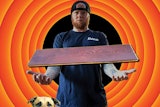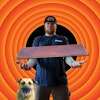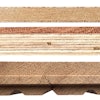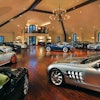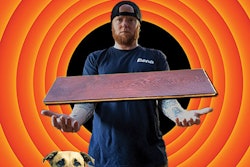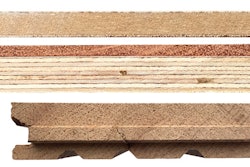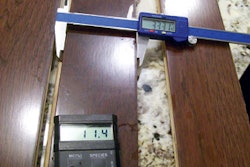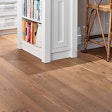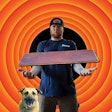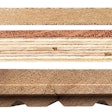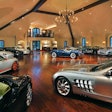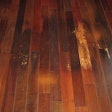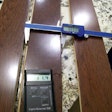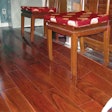Q: What advice can I offer to help purchasers extend the life of their factory finished wood flooring?
A: This is one of the most frequently asked questions about factory-finished wood floors. The essential advice that must be imparted is to regularly clean the floor using the manufacturer's recommended cleaner. Of course, be sure to provide the relevant warranty and maintenance brochure.
While each home environment is different, this basic information will help purchasers understand how best to maintain their hardwood floors and protect their investment.
Wood floors aren't indestructible
Water, spills, dirt and other abrasive substances can damage a wood floor's finish, in spite of today's technology. Factors influencing wear include location, traffic patterns, children and/or pets; these have a direct impact on how often a floor needs to be cleaned. The floor should be swept or vacuumed as needed, and spills should be wiped up as they occur. It is crucial that the consumer use only the manufacturer's recommended cleaner. Why? It works best with the finish; it leaves behind no residue; and it protects both the floor and the warranty (use of non-approved cleaners may void some manufacturers' finish warranties).
Pivot points are pivotal
Pivot points, or high-traffic areas, are subjected to more than normal standing, pivoting and spills; I suggest placement of small area rugs in these areas to add protection. Kitchens with wood floors sometimes show surface wear and abuse where no precautions are taken. Tables and chairs are tough on any floor; having the proper felt pads or glides is important for protecting the finish and wood and helps prevent problems before they occur.
Hardwood floors in foyers or areas with exterior doors also need extra protection. Placing walk-off mats just outside helps prevent dirt and debris from being tracked in. Just inside these entry points, I suggest placing small area rugs. When choosing an area rug to be placed directly over the wood, make sure the backing allows the floor to breathe; this is especially important for a floor that is glued directly over a concrete slab. Lastly, instruct the homeowner to vacuum or shake off area rugs and walk-off mats frequently.
Humidity matters
Wood is a natural product that expands and contracts at different times during the year. Homeowners need to understand the importance ofmaintaining proper humidity levels year-round to help minimize the effects of too much or too little airborne moisture. Controlling humidity, especially during the heating season, helps minimize gaps between boards. Make sure the customer knows the manufacturer's recommended humidity level to ensure the wood remains as stable as possible. A thermal hygrometer that monitors the relative humidity can usually be purchased at a local hardware store.
Species also make a difference
Each species has a unique set of characteristics that need to be considered when choosing hardwood flooring; be up front when helping the consumer decide on a particular species.
Hardness: Just because one species is harder than another doesn't mean it won't dent or scratch; all woods can dent or scratch given enough applied pressure or resistance.
Grain: The flooring's grain pattern also needs to be considered. For example, maple is a beautiful wood that is harder, denser and lighter (in its natural color) than oak. But maple can dent and scratch, and its lighter color and lack of visual graining tend to make dents and scratches more visible. Also, remember that higher gloss finishes tend to show scratches and wear more readily than duller sheens, usually requiring more maintenance than lower gloss finishes.
Photosensitivity: Both natural sunlight and artificial lighting can change the color of a floor over time. Flooring installed in rooms with a lot of direct sunlight can be dramatically affected; often times, this isn't evident until a rug or piece of furniture is moved. Keeping blinds closed while rooms are unoccupied helps minimize the negative effects of prolonged exposure to sunlight.
Handcrafted floors
Handcrafted floors are relatively new to the prefinished market, but they have become increasingly popular. Hand-scraped, hand-sanded and other distressed flooring provide a one-of-a-kind appearance wherever they are used. Fortunately, maintenance is the same for these handcrafted floors.
Maintaining and preserving a factory-finished hardwood floor involves regular cleaning … and more. Arming the purchaser with information and advice at the time of purchase goes a long way toward customer satisfaction over the life of the floor.











